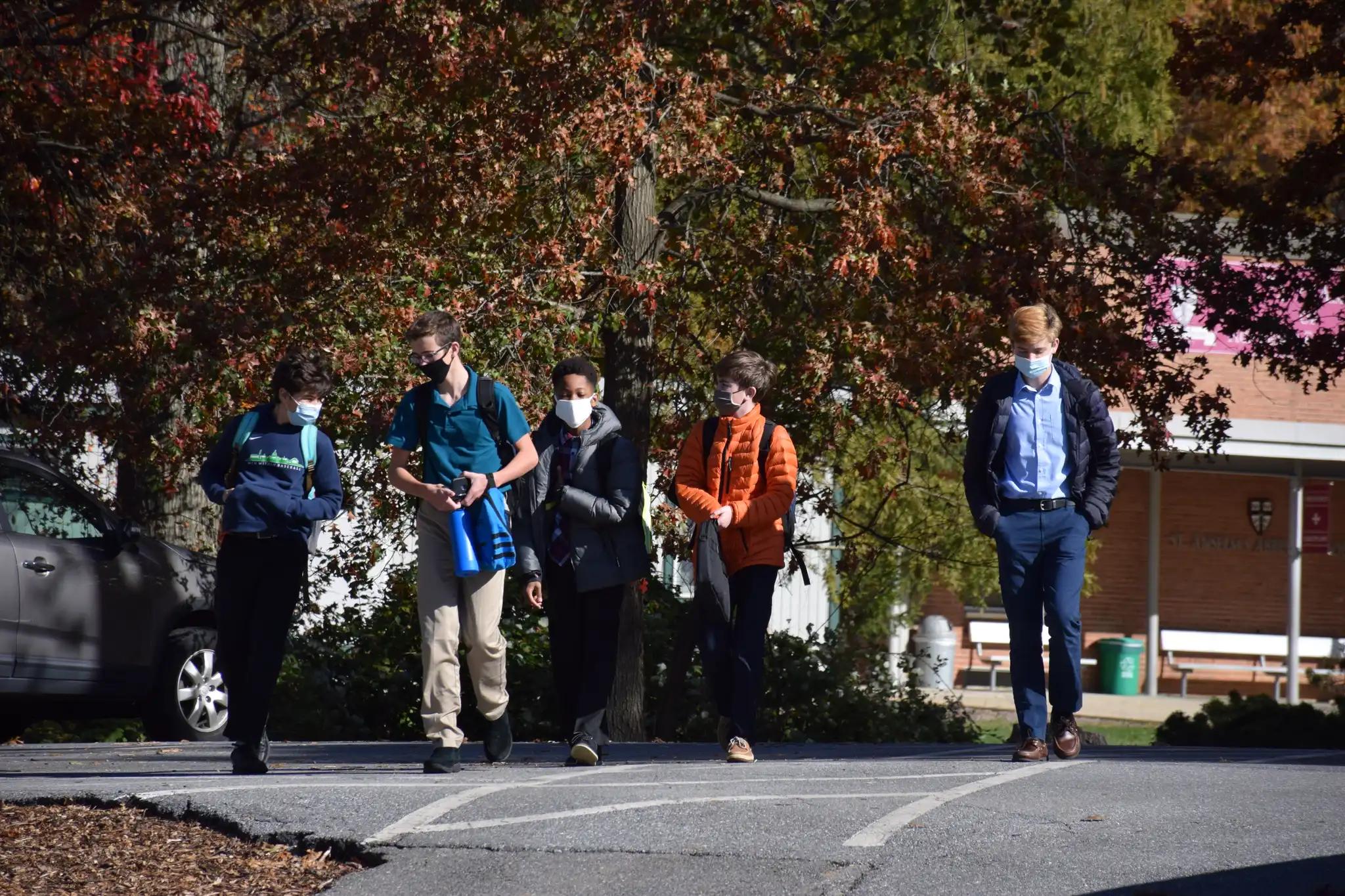Going the Distance
by Griffin Hubner, Form V
3 min. read — February 26, 2021

Last Spring semester, St. Anselm’s transitioned to distance learning over concerns of COVID-19. Nearly twelve months later, we are still quarantined. Annual academic and athletic events like the basketball tournament have fallen flat, and newly enrolled students barely get the Abbey experience our school knew back before the pandemic. Students must now choose whether they want to be distanced from each other on campus or stare at a screen for hours at home. We can only hope for a better school year in the fall of 2021.
I would wager that interacting with students around campus is one of the things that made my previous years here the most enjoyable.
But has the pandemic really made Abbey life that unbearable? Because many students and parents are rightfully nervous about COVID-19, St. Anselm’s had opted for a digital approach to learning, otherwise known as distance learning. Students can safely attend their classes from the comfort of their own homes, a fresh alternative to wearing a mask all day. Though there have been some hiccups along the way, the programs for distance learning have been efficient and easy to master. However, this in turn has staggered a key part of Abbey life: social interaction. There are not many opportunities to interact with fellow students during the breaks between classes. I would wager that interacting with students around campus is one of the things that made my previous years here the most enjoyable. People need these kinds of interactions to cope with everyday life. Yet they cannot happen with something as impersonal as an academic program.
Enter digital interaction. Apps such as Discord and Zoom have been steadily gaining more popularity as the pandemic has trudged on. This was a way to make social interactions that were now off limits in a quarantined environment possible. Something as simple as creating a chat group with some friends made distance learning far more bearable for many students (myself included). Since a great deal of student work has been adjusted to be more collaborative, students are able to use these digital gatherings to conduct study sessions, work on homework, or simply have a place to chat. Students have always been encouraged to take the initiative in academics, but distance learning has turned that advice into a given fact. Independent work is the structure of distance learning, though forming a study group should also be commended.
Something as simple as creating a chat group with some friends made distance learning far more bearable for many students (myself included).
That being said, digital interaction is not limited to school days. We have all had an eye-opening experience on connecting digitally because of quarantine. People can find creative ways to set up online events, even for things that might have previously appeared as in person only. I, for example, have participated in mass Zoom calls with my family every now and again, something that none of us had even considered before we had to rely on Zoom to see each other.
The pandemic has changed all of our perspectives. A situation that we thought would isolate us has ended up expanding our methods of joining together. All it takes is our own initiative to make these distanced interactions happen. So as this challenging year continues and vaccines become increasingly available, please do try to supportively reach out to others with words of comfort, friendship, and hope. If you feel isolated, remember that we all share that same feeling right now. Taking that extra step to speak with and listen to others will surely go a long way to keep us supportively connected with friends, family, and classmates.